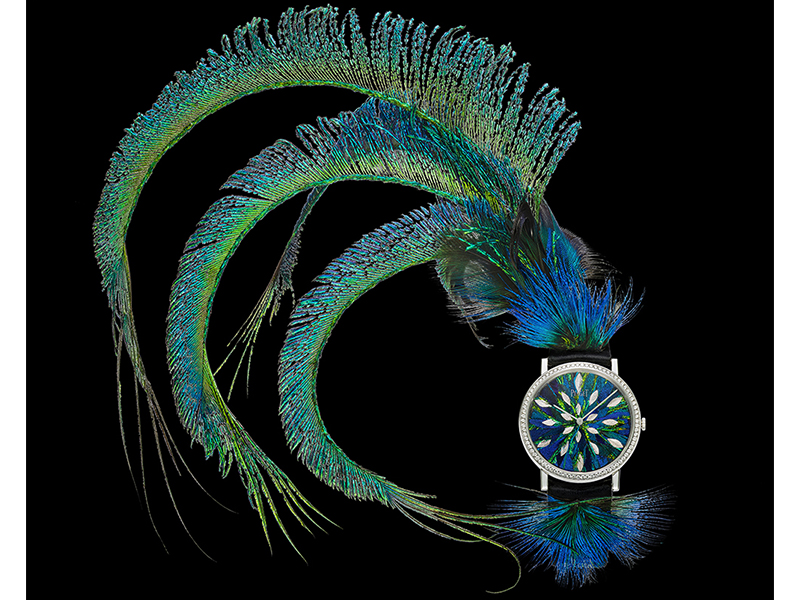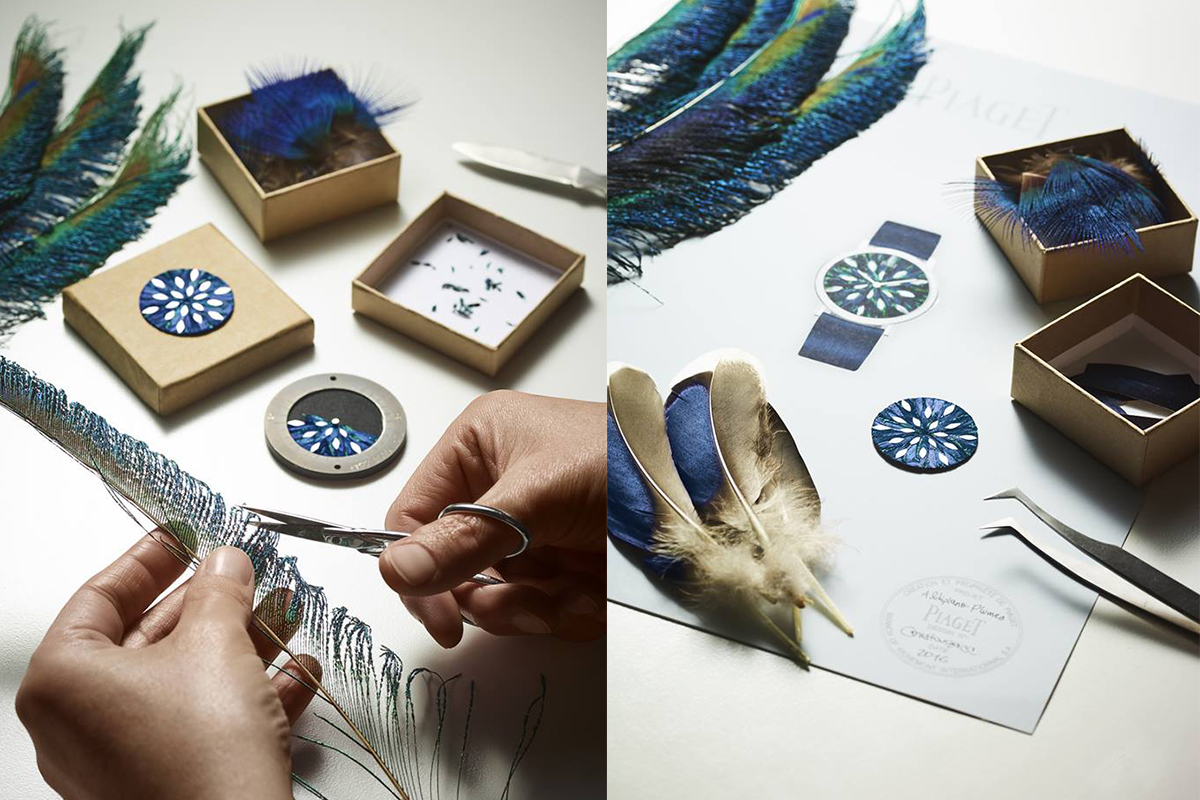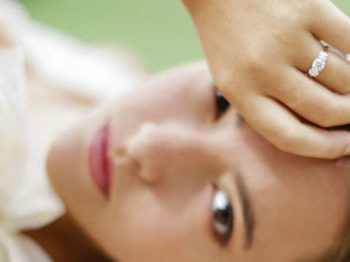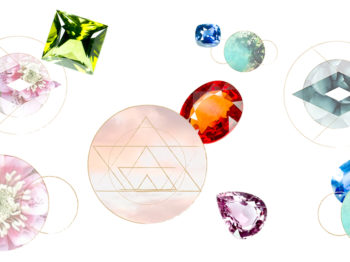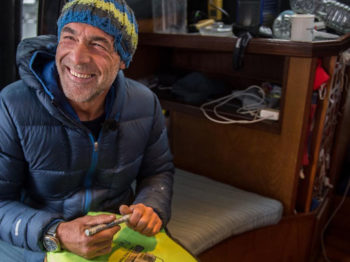Named plumassière in French, the feather worker is a genuine art master. As a matter of fact, Emilie Moutard-Martin worked in close collaboration with the Swiss brand Piaget in creating a one-of-kind piece made of exquisite feathers in addition to a limited edition of 38 Altiplano pieces, celebrating the 60th anniversary of the iconic watch. The Eye of Jewelry sat down with her for a few minutes …
About your piaget collaboration… how many feathers did you use?
I honestly did not count! The ones I have used to make this project, were the feathers taken at the very end of the peacock’s trail.
Is choosing the right animal a challenge?
Yes because it all depends on the basis we work on! Working with the Piaget team was very easy. They were very receptive and reactive in regards to the dial work which made the process of selection rather easy.
How do you feel about this collaboration ?
Our first encounter was two and a half years ago… it was a beautiful meeting on a creating and humane perspective. Introducing our third collaboration is just amazing: from working on exceptional pieces to be driven by a challenge of working on miniature pieces for a legendary name…
What changed between the start and the end of the project?
For this specific project on the Altiplano, we have seen a drastic change in terms of motifs and colors. The designers aren’t feather experts, therefore, they come up with hues that don’t necessary exist on a specific type of animal… which is why they need me and my experience.
How did you become a feather master in the first place?
A simple revelation I had staring at a feather during an exhibition. Then, the feather revealed itself to me through a variety of samples I came across.
Did you know anything about it?
Absolutely not! I graduated with a psychology degree but I have always been interested in art, textiles and artistic materials. I did a thesis on the identity of artisans in social psychology… a rather complex topic that helped me enter this field where I became a documentalist in an institute dedicated to the métiers d’arts. In parallel I got trained to the hat-making technique where I discovered the work of feathers.
What makes you vibrate about it?
The feather itself. There are so many ways to work with it, around it, on it. What is more beautiful than to work with a natural material created by nature that cannot be manufactured? It keeps on fascinating me day after day…
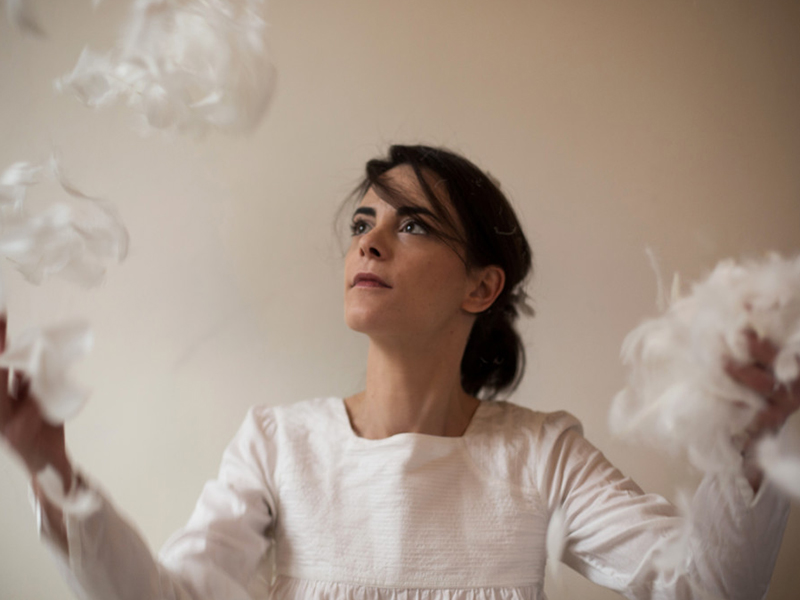
What is the biggest challenge in the art of feather work?
I believe that the most complex things are the traditional techniques for feather work on the setting and the bonding. For a bracelet, both techniques must be used in addition to the technique of feather embroidery. The setting of the feathers allows us to create feather pegs where we put together some elements on stems to create pegs. There are different bonding techniques that are always done by overlap. For the pieces shown at the SIHH (Salon International de la Haute Horlogerie) that I developed for Piaget back in January, it was a quite specific task because we worked closer to the traditional inlay technique where we barely had overlay of the large end of the feather. The feathers were simply overlapping at one specific spot.
What is the most difficult thing?
The miniaturization is difficult. Also, one of the constraints when working with dials such as the Piaget Altiplano, is to obtain a face that is completely flat, smooth and regular in terms of thickness.
Is everything cut by hand?
Yes absolutely, even the small feathers in the center in the shape of a shell. The silver effect is obtained by applying a silver leaf over the feather that I cut with scissors in a small marquise shape.
What is the feather loss percentage?
When I start working on a feather, I need to stay extremely focused in order to get little waste. When I cut, I am in a specific frame of mind and a physical state that allows me to be hyper focused. My cuts are therefore extremely precise.
Can everything on the feather be used?
Absolutely. Depending on the species, we play with a difference in thickness, for example between the duck feather on the wing and the rooster feather covering its belly: it is really not the same. Generally, my biggest wish is to work with feathers that are as thin as possible, because these feathers are used in finishing.
What are the constraints in terms of animal welfare?
We are subject to the regulation on the protection of the species so we cannot use just any feather, and it must come with its certificate.
What are the safety precautions before working with the feather? Are they washed?
We don’t do anything. We get the feathers once there are treated by the supplier but I regularly wash them and treat them against parasites.
The feathers do not deteriorate? To what extent don’t they change colors?
No…they are made of keratin just like human hair. If they are preserved in optimal conditions they can remain for centuries without any problems. We can find feather patchworks from the 15th and 16th centuries that are still displayed in museums, undamaged. Those are true works of art !
